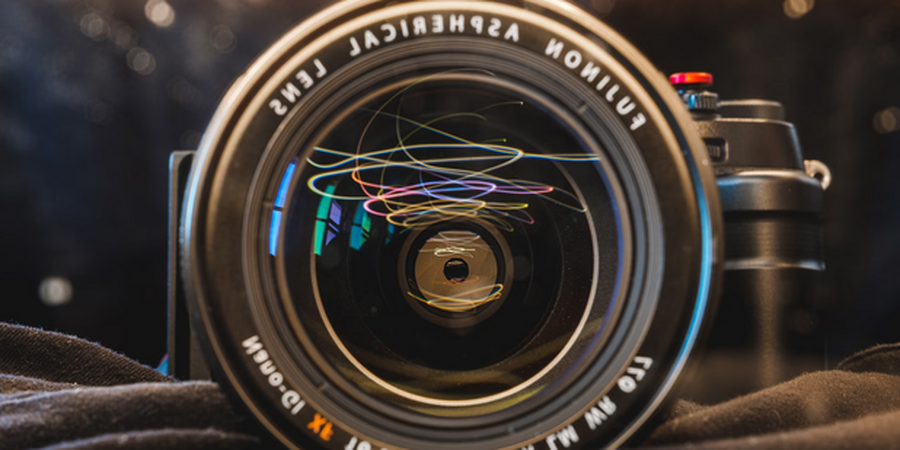Philadelphia, PA - In the era of digital photography, a remarkable transformation has taken place, bidding farewell to film rolls and darkrooms and ushering in a world defined by high-definition digital imagery, instant sharing, and the growing influence of artificial intelligence. This article delves into the pivotal role AI now plays in modern photography, from elevating image quality to reshaping.
Embracing the Photography Revolution: The Impact of Artificial Intelligence
A New Dawn in Photography
Artificial intelligence has shown a revolution in the world of photography, particularly in the realm of smartphones. Today, AI-powered cameras empower even novices to effortlessly capture stunning photos. These cameras utilize advanced machine learning to identify scenes, objects, and faces, automatically settings like exposure, white balance, and focus.
AI-driven camera systems employ ingenious techniques to enhance image quality. For instance, they can capture multiple rapid shots and merge them through computational photography, reducing noise and expanding the dynamic range. Regardless of challenging lighting conditions, AI-powered cameras excel in delivering exceptional results, ensuring that your precious moments are flawlessly preserved.
Enhancing Images
AI-driven image enhancement tools have become indispensable for both amateur and professional photographers. Post-processing software, such as Adobe Photoshop and Luminar Neo can remove noise, sharp AI details, and even alter the lighting and colors of a photograph. This means that a mediocre photo can be transformed into a masterpiece with just a few clicks, thanks to AI's intelligent pixel-by-pixel analysis and adjustment capabilities.
Consider the task of removing unwanted objects from a photo. In the past, this required hours of meticulous editing. However, AI-powered tools can now swiftly identify and seamlessly erase these objects, leaving behind a pristine image. This not only saves time but also unlocks creative possibilities previously thought unattainable.
Streamlined Editing: Saving Time and Energy
One of the most time-consuming aspects of photography is the editing process. Sorting through hundreds of shots, tweaking exposure, and fine-tuning color balance can be a daunting task. AI-driven editing software has simplified this process. Programs like Luminar Neo use AI photo editing to analyze photos and suggest automatic edits. This speeds up the editing process and helps novice photographers achieve professional-quality results.
Moreover, AI can assist in curating photos. By analyzing factors such as image quality and composition, AI algorithms aid photographers in quickly identifying the best shots from a series. This feature is invaluable for professionals who frequently capture numerous photos during a shoot.
Facial Recognition and Tagging
AI has also made essential strides in photo organization. Facial recognition technology allows effortless tagging and categorization of photos. Services like Google Photos and Apple Photos employ AI algorithms to identify and group photos based on the individuals featured in them. This simplifies the process of locating and reminiscing about cherished memories, eliminating the need for manual tagging and sorting.
Beyond facial recognition, AI can analyze photo content to categorize images based on their subject matter. For instance, if you've taken photos of landscapes, pets, or food, AI can automatically create folders or albums, making it convenient to access your images.
Generative Adversarial Networks (GANs)
Beyond the technical aspects, AI is also revolutionizing the creative landscape of photography. Generative Adversarial Networks (GANs) are now being harnessed to generate entirely new and artistic images. Artists and photographers can input their ideas, and GANs will produce unique compositions based on those concepts. This fusion of human creativity and AI opens up new avenues for artistic expression in photography.
GANs can generate images that defy reality, blending different styles, creating dreamlike landscapes, or even emulating the work of renowned artists. This enables photographers to experiment with their artistic vision and produce images that stand out in a crowded digital landscape.
Ethical Considerations and the Future of Photography
While AI has undoubtedly revolutionized photography for the better, it also raises important ethical questions. Concerns related to privacy, manipulation, and the authenticity of images have come to the forefront. As AI continues to advance, we must grapple with these challenges and develop ethical guidelines to ensure that photography remains a powerful, responsible, and authentic medium.
For example, the use of AI in image manipulation raises concerns about the potential for misinformation and fake imagery. The ability to convincingly alter photos can have far-reaching consequences, from spreading misleading news stories to perpetuating unrealistic beauty standards in advertising. As photographers and consumers, it is imperative that we remain vigilant in distinguishing authentic images from manipulated ones and promote ethical photography practices.
Conclusion
Artificial intelligence has ushered in a new era of photography, making it more accessible and user-friendly for everyone. Thanks to AI-powered cameras and automated editing tools, taking and enhancing photos has become easier than ever before. AI not only enhances the technical aspects of photography but also fuels creativity.
However, as we embrace this technological advancement, we must also consider the ethical dimensions. It is crucial to use AI responsibly to ensure that photography remains a faithful representation of our world. AI has not only transformed photography but has also reshaped the way we perceive and interact with visual content, promising an exciting future for this timeless art form.


